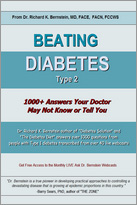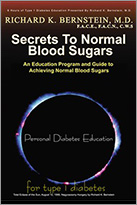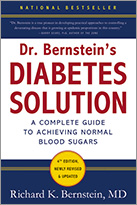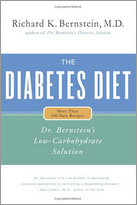Cardiovascular exercise is widely associated in the public mind with what the popular press calls aerobic exercise. However, aerobic exercise as many people practice it a leisurely jog, a relaxing bike ride, even a brisk walk is really of only limited benefit to your cardiovascular system, doesn’t build muscles, and has relatively little impact on your stamina and capacity. The kind of cardiovascular exercise I recommend to my patients (and follow myself) is very strenuous, operates in the anaerobic range, and accomplishes tremendous things. For example, many years ago, before I became a physician, I used to go to diabetes conventions. There was always a group of doctors who would get up in the morning, don their running togs, and go running. These were people who ran every day. I’m not a runner; I work out in the gym every day with my weights. But I do a particular cardiovascular workout on an exercise bicycle that I will explain. And so I would go out with these doctors on their runs. After a few miles, people would start dropping out. Eventually, I’d be the only one left and then I’d go another five miles and come back. Clearly, although I was older than most of these people, and not a runner, I had much more stamina. The stamina was created by this anaerobic cardiovascular exercise.
Exercise Harder, Exercise Better
Cardiovascular workouts can be performed on a treadmill, a stair climber, or bicycle if you’re male, I recommend a recumbent bicycle rather than the standard upright bike. It’s much more comfortable for men because the seat is like an ordinary chair. Ideally, your machine should have a meter that reads the amount of work that you’re doing in calories per minute as well as total calories, but certainly you can get a good workout without such an output display. It is important to wear a pulse meter. The brand that I like best is called Polar; it costs about $60, and you wear it around your chest. If you belong to a health club that has a treadmill with a pulse meter in the handlebars, you won’t have to put one on your chest, but some sort of pulse meter is essential. The degree of workout you’re getting is measured by how fast your heart works. When you get evaluated by a cardiologist before you start your exercise program, you should ask what your target pulse rate ought to be. Over time, you can increase it.
There’s a formula that we use to specify maximum pulse rate: we take 220 and subtract from it your age. So if you’re sixty years old, you’d have a theoretical maximum pulse rate of 160 that is, in theory, you shouldn’t be able to exercise at a faster pulse rate. Your doctor will decide based on your overall health and fitness level what percentage of this would be a good target rate for you — say, 75—80 percent. Rarely would a doctor start you out at 85 percent of maximum or higher. Eventually, you may find that you can get up to and beyond your theoretical maximum I can exercise at 165 even though my theoretical maximum is 152. I can do this without having a heart attack in part because I’ve been exercising strenuously for thirty-five years. Don’t expect even after years of this kind of exercise to get your heart rate up to or even near your theoretical maximum, or even to your target, right after you begin your cardiovascular workout. This takes time. I get to my target pulse rate toward the end of my workout.
To do a really effective anaerobic/cardiovascular workout, start out by selecting a safe, comfortable speed and setting the resistance of your machine to the point where your muscles are so tired after about 20 seconds that you can’t go any further. As soon as you reach this point, you lower the resistance slightly, and keep going. For treadmills, the resistance will be the angle at which you’re running uphill. So if you’re using a treadmill, you need to be able to set the incline of your treadmill from the handlebars you don’t want to have to get off, reset the angle, then gel back on. You’ll lose your rhythm, regain some of the oxygen in your muscles, and defeat the point of the workout.
Lower the resistance a little at a time, and each time you lower it, shoot for 20 seconds of exercise until you can’t go anymore. Nearly from the beginning you’re wiped out, yet you keep doing it at lower and lower resistance. This is a real workout.
Your goal should be to get your heart rate up to (but not above) the training level recommended by your physician. If you can’t reach the recommended rate within 10 minutes, increase your speed until you get there. Try to maintain this rate for at least 5 minutes. When you think you’ve had enough, lower the resistance to zero but keep your legs moving until your pulse has slowed to a value about 20% above your starting point. This slow exercise pumps blood back to your heart from your legs, thereby greatly reducing the hazard of a post workout heart attack.
It’s unnecessary to exercise at your target heart rate for more than 5-10 minutes. A cardiovascular workout of this kind for about 15 minutes should be plenty for most people, unless you’re training for competition. However, I recommend that rather than watch the clock, you Look at the calorie counter on the machine, if it has one, and decide on a particular number of calories that you want to shoot for. Calories are a measure of work done and therefore a reasonable gauge of your workout. Minutes or even miles don’t take effort into account. I aim for about 80—100 calories. When it gets up to that range, I call it quits. But, the point of this kind of exercise isn’t weight loss, so don’t start looking at the calorie counter thinking that if you burn 10 more calories you’ll lose another pound exercise just doesn’t work that way.




